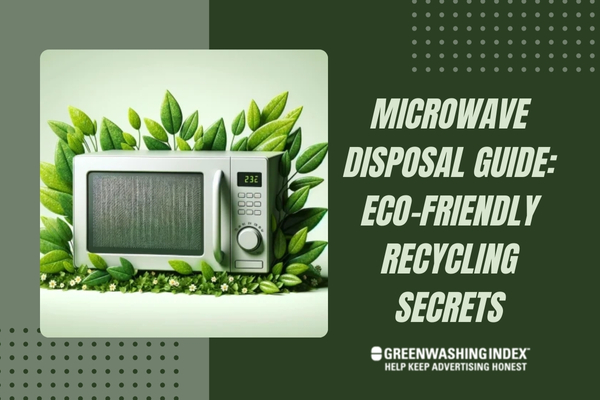Have you ever stood there with an old microwave, wondering what to do with it? Let’s face it; knowing how to get rid of these bulky items isn’t common knowledge. However, tossing them in the trash isn’t the answer. Microwave disposal must be done responsibly if we care about our planet. Folks, I’m here to tell you that there is a way to do this right—without harming our environment.
When it comes time for microwave disposal, the best thing you can do is recycle it. Recycling microwaves helps prevent harmful materials from damaging the earth and also allows some parts to be reused. But remember, not just any place will take your old microwave – you’ll want to check with local recycling facilities or look for special e-waste removal days in your community.
Here’s What You’ll Uncover:
- The ins and outs of proper microwave disposal
- How you can help save the planet one appliance at a time
- Local places where you can recycle that clunky old microwave
- Retailer programs that make eco-friendly disposal easy
- Cutting-edge recycling tech that’s changing how we handle e-waste
Understanding Microwave Disposal
Let me talk to you about microwave disposal and why it matters a lot when we think about the world we live in. You might be wondering, “What’s the big deal with throwing away an old microwave?” Well, it’s not as simple as dumping it in your regular trash can.
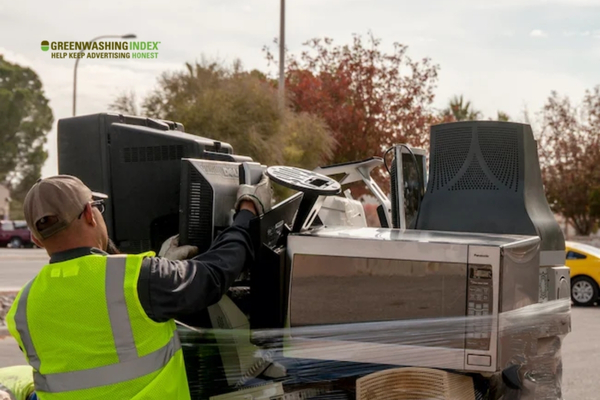
Breaking Down Microwave Recycling
Microwave disposal is all about getting rid of your old microwave the right way. It’s not just tossing it aside; it’s handling it so that it doesn’t hurt our environment. Microwaves are like any other electronic waste; they have parts that can be bad news for our earth if they’re not thrown away properly.
When you recycle a microwave oven, here’s what happens: The microwave is taken apart, and each piece is sorted out. Some bits are made of metal and can be melted down to make new things. That’s really good because recycling metal means there’s no need to dig up more from the earth.
Other parts of your microwave might have bits that aren’t safe for nature if they end up in landfills. For instance, some microwaves have a thing called PCBs (printed circuit boards) that can leak bad chemicals into the ground if they aren’t disposed of right.
This is why when we talk about microwave disposal, we mean sending your old friend off in a way that respects our planet. By recycling microwaves, we make sure those harmful materials don’t go into our soil or water.
Regulations and Best Practices
Now let me tell you how important rules are when we say goodbye to an electronic buddy like a microwave. There are laws meant just for e-waste management — that includes anything with plugs or batteries that don’t work anymore.
To follow these regulations best, start by checking with your local waste management folks or government guidelines on how to toss out electronics safely – this is key in environmentally friendly disposal. Most places won’t let you throw electronics in with regular trash due to those possible nasty chemicals I told you about.
Each place might have slightly different ways of doing this eco-friendly microwave removal gig. For starters:
- You may need to drop off your microwave at a special e-waste center.
- Sometimes, there are events where everyone brings their e-waste for safe handling.
- Or maybe there’s even a pickup service available.
But don’t just drop off and drive off! Check if there’s paperwork or fees so you’re not stuck going back again with more questions than answers.
The goal here isn’t just following rules but also taking care of where we live – being responsible by ensuring sustainable appliance disposal keeps everything nice and green around us (figuratively speaking).
So next time you’re upgrading your kitchen gadgets, remember the little chat we had about recycling microwave ovens – doing so will help keep things clean & green!
Also Read: Mattress Disposal: Easy Steps for Eco-Friendly Solutions
Step-By-Step Guide to Microwave Disposal
Getting rid of an old microwave isn’t as simple as throwing out ordinary trash. It involves careful steps to ensure that it’s done responsibly and safely. That’s why having a step-by-step guide is vital for anyone looking for microwave disposal.
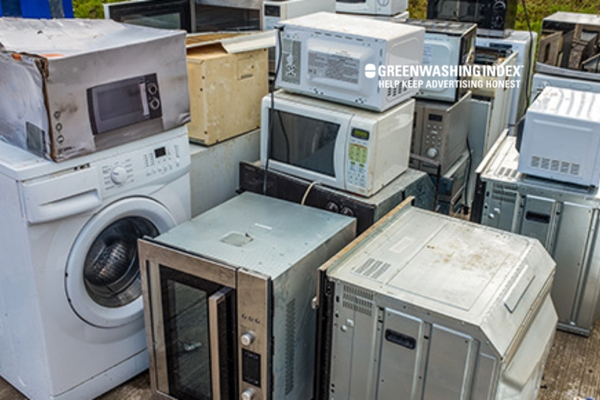
Evaluating Your Microwave’s End-of-Life
When it’s time to say goodbye to my trusty microwave, I always take a moment to evaluate if it’s truly the end of the road. Here are the steps I follow:
- Check for Signs of Trouble: If my microwave stops working, I listen for strange sounds, look for burn marks, or any signs that show it is not safe to use.
- Assess the Repair Costs: Sometimes, my microwave might need a simple fix. But if fixing it costs more than half the price of a new one, then I think about letting it go.
- Find Out About Reuse: Before deciding on disposal, I consider if someone else could use my old microwave. A local charity or thrift store might take it.
- Look Up Donation Options: If the microwave still works well, but I don’t need it anymore, donating is a great choice. It helps people and uses fewer resources than making a new one.
- Review Recycling Policies: Some places have rules about how to recycle electronics like microwaves.
- Seek Professional Advice: When in doubt, I call a professional repair shop or recycling center and ask their opinion on what should be done with an old appliance like mine.
Safe Preparation for Recycling
If recycling is the chosen route for my old friend – after all, we had plenty of good times popping popcorn together – here’s what I do:
- Unplug and Clean: First things first – unplug and clean out any bits of food or grease inside.
- Secure the Door: A microwave door can open during transport, which can be unsafe, so always make sure that won’t happen by taping or tying it shut.
- Wrap Cord Neatly: To avoid tripping hazards or damaging other items near your microwave during transportation, wrap up that power cord nicely around your unit (or secure it with tape).
- Protect from Weather: If you’re going to store your microwave outdoors before recycling, ensure that you cover it up to shield it from rain or dew, which could damage electronic parts inside.
- Transport Safely: While moving out your microwave from home, make sure nobody gets hurt by lifting with knees bent, not back straight, protecting both you & and the unit when putting into the car trunk bed of a truck, etcetera!
Remember, these steps are not just about doing right by our planet but also for the safety of everyone involved in the process!
Also Read: Washer and Dryer Disposal: Eco-friendly Methods Revealed!
Where to Dispose of Your Old Microwave?
Getting rid of an old microwave might seem like a hard task, but it’s important for the health of our planet. We must get rid of these items the right way so that we don’t harm the environment. Here’s how I find good places to take my old microwave for recycling.
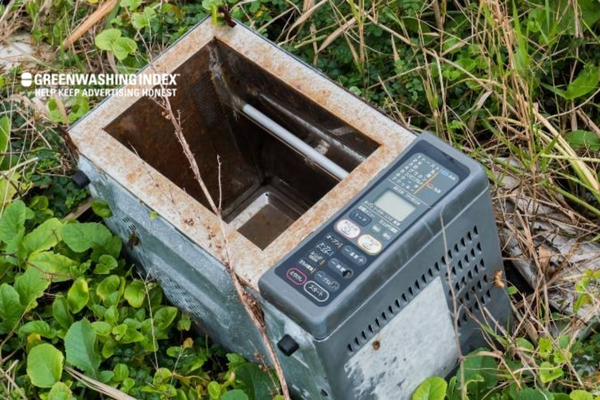
Local Options for Microwave Recycling
When I need to recycle a microwave, I start by looking close to home. There are several local programs and events that help with recycling electronics. Here’s what I do:
- Check with Local Waste Management: Often, they have information on where to take electronic items like microwaves.
- Search for E-Waste Events: Some towns have special days when you can bring your old electronics so they’re disposed of properly.
- Ask at Home Improvement Stores: Stores that sell electronics sometimes also help with recycling the old ones.
- Look Up Specialized Recyclers: Some businesses focus only on things like microwaves and other e-waste.
Let me explain in more detail:
- Local Recycling Centers: Many areas have centers where you can bring items, including microwaves, for recycling. The workers there know exactly what to do with them.
- Waste Pick-Up Days: Some places offer special pick-up days for electronics, including microwaves – check your local waste management schedule.
- Electronics Retailers: Certain stores that sell appliances may also offer options to bring in your old microwave when they host electronic waste collection events.
When you’re searching locally, remember:
- Not all places will take every kind of electronic waste.
- Sometimes, there could be a small fee involved.
- Always call ahead or check online before you go; it saves time!
Retailer Take-Back Initiatives
Another great option is using retailer take-back programs when buying a new appliance. Here’s how it works:
- When buying a new appliance, ask if the store has a program in place where they can take back your old one – many do!
- This option might be offered as part of the delivery service when they bring your new item home and take away the old one for disposal.
Here are pointers about retailer initiatives:
- Participating Stores: Big appliance retailers often run such programs as part of their customer service or eco-friendly initiatives. For instance:
- Some stores give discounts on new purchases when you trade in your old appliance at their stores—this also includes microwaves!
- Others might even collect from your home directly, especially if you arrange delivery of new appliances from them; this way, they help out not just by selling us things but by disposing of our unwanted too!
By choosing this route:
- You’re ensuring proper disposal without much hassle—no need to carry heavy electricals far!
- It’s cost-effective; sometimes, it even saves money or helps us get deals on our next buy.
Keeping an eye out for local recycling options or using retailer take-back initiatives makes microwave disposal stress-free and environmentally friendly! It’s about being smart about our choices and actions – taking care not just while we use appliances but also once we’re done with them!
Also Read: Wood Recycling: Discover Secrets for a Greener Future Now
Innovative Recycling Technologies
When it comes to microwave disposal, we’re seeing some pretty cool stuff happening these days. Companies are coming up with fresh ways to take apart old electronics and pull out useful bits to make new things. It’s not just about dumping everything into a landfill anymore.
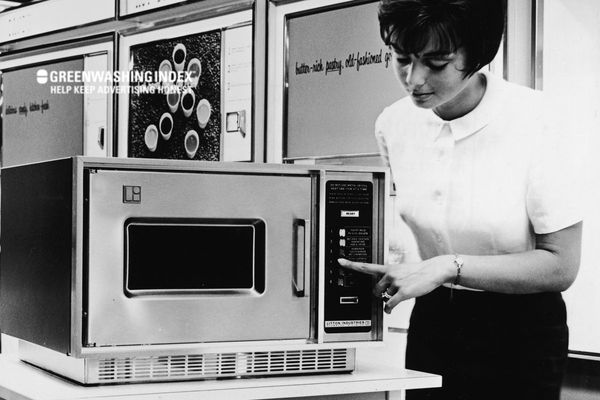
Advancements in E-Waste Management
Let’s dive into the world of e-waste management and see what’s new. First up, you should know that there are machines now that can sort through old electronics like magic. They use lasers and special cameras to tell what each part is made from. Then, they separate the metals from plastics and whatever else is in there.
And here’s a fancy word for you: ‘automated disassembly.’ Basically, robots do the hard work of taking apart old microwaves and other gadgets piece by piece. By doing this, workers stay safe from any harmful stuff inside, like chemicals or sharp bits.
Also, I heard about these tiny creatures called ‘bioleaching microbes.’ These little guys eat through metals to help break them down so we can recycle them better. This method is more nature-friendly than using harsh chemicals.
In short, technology is making it easier to deal with old microwaves in smart ways that don’t hurt our planet too much.
Sustainability Through Technology
Now, let’s talk about how all this tech helps us keep things green when getting rid of appliances. Reusing parts from old microwaves means we don’t need to dig up more resources from Earth every time someone buys a new one.
There’s also software now that tracks where all the pieces go after they leave your house. This tracking helps make sure recycling happens right – no cheating or cutting corners!
Plus, inventions like 3D printing are letting us turn recycled plastic into new stuff – it could be anything from a phone case to part of another appliance! So yes! Your zapped popcorn maker might live on as something completely different after it hits the recycling plant!
Technology isn’t just about making shiny new gadgets anymore; it’s playing a huge role in keeping our older gizmos from causing problems after we’re done with them.
To keep it simple, modern technology – super cool robots, smart programs – helps us recycle microwaves without messing up Mother Earth as much as before. And that’s something worth getting excited about!
Also Read: Styrofoam Disposal: Easy Ways to Reduce Environmental Impact
DIY Upcycling Ideas Before Disposal
When it’s time to say goodbye to an old microwave, it might feel like the only option is disposal. But before I let it go, I think about all the ways I can give parts of that microwave a new life. It’s not just eco-friendly; it’s also a fun way to get creative at home. With a few tools and some imagination, parts of my old microwave can become handy items.
Crafting with Microwave Parts
Now, let me talk about how I get creative with those bits and pieces of my microwave. By taking it apart (safely, of course), I can find all kinds of treasures that are perfect for crafting.
- View Screens as Picture Frames: The front panel has a cool-looking glass screen. Once removed, this glass can frame pictures beautifully! Here’s how I do it:
- Safety First: Removing the screen must be done carefully to avoid breaking the glass.
- Clean-up: After extraction, clean the screen and make sure no food splatters ruin my photo display.
- Get Framing: Then attach photos behind this clear door with some tape or glue.
- Decorate: Use paint or markers to add some color around the edges if you wish.
- Magnets from Motors for Other Projects:
Magnets – these little things are super strong and come out from the motor inside my microwave. They’re dead useful in loads of projects:- Hold papers on my fridge: Instead of buying new magnets, these ones do the trick!
Here is how I repurpose magnets:
- Take out those magnets safely by dismantling them off the motor—this may require some tools like screwdrivers or pliers. Be gentle here because we don’t want to damage them.
- Clean them well so they’re nice and shiny for their new job.
- Turn them into anything magnetic – stick them under toys so they can stick onto other metal things, or even make your own fridge magnets by gluing decorative pieces on top.
What’s important is that upcycling these parts is not only good for cutting down waste but also sparks joy in my heart, knowing that something old has found a new purpose!
FAQs
Are there any components inside a microwave that are considered hazardous?
Yes, microwaves contain parts like the magnetron and capacitors that can be unsafe. It’s best to let experts handle them.
How do I know if my municipality offers electronics recycling programs?
You can check with local waste management services or your town hall for info on e-waste programs.
Can all parts of a dismantled microwave be recycled?
Not all, but many parts can be. The metal body, glass door, and some electronic components often qualify for recycling.
Is there usually a cost associated with disposing of my old microwave?
Sometimes there’s a fee. It depends on local disposal services and recycling facilities. You might want to check beforehand.
Conclusion
Recycling microwaves is a vital task I take seriously. It’s not just about freeing up space in my home but also about caring for our environment. Proper microwave disposal ensures harmful materials don’t end up damaging nature. Going through the right channels and following regulations makes a big difference. Whether donating a working microwave or recycling an old one, it’s all about being responsible.
Moving forward with innovation means less waste and smarter recycling processes—making sustainability more achievable even in our tech-heavy lives. Before I say farewell to an old friend like my microwave, checking for creative upcycling opportunities can give it new life, too.

